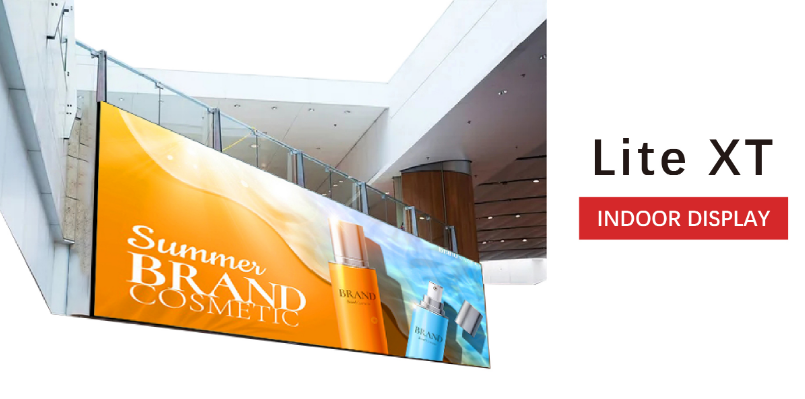Introduction to Indoor Digital Signage: Transforming Interiors
Operating a business necessitates an ongoing pursuit of innovative methods to captivate and retain people’s attention. Whether your goal is to boost sales, keep your audience informed about upcoming events, or cultivate a welcoming atmosphere, digital signage emerges as a valuable asset. With its dynamic and adaptable technology, you can effortlessly engage and connect with your audience, thereby enhancing your outreach and interaction.
Navigating complex indoor spaces, such as airports, hospitals, or large office buildings, can be a daunting endeavor. Utilizing indoor digital signage, however, facilitates clear and interactive wayfinding displays, assisting visitors in easily locating their destination, checking in for flights, or finding the nearest restroom.
Indoor digital signage transcends mere screens on walls; it serves as a dynamic communication tool poised to enhance numerous indoor settings, spanning from retail stores and restaurants to corporate offices and healthcare facilities. The applications of this technology are extensive and continuously evolving, promising better experiences, enhanced communication, and ultimately, a strengthened sense of community among both workers and customers in various businesses. As this technology advances further, its increasingly integral role in shaping indoor spaces should come as no surprise.
What is Indoor Digital Signage?
Indoor digital signage involves the utilization of electronic displays, such as LCD or LED screens, for disseminating information, advertisements, or multimedia content within indoor environments. Unlike conventional static signs, indoor digital signage provides real-time flexibility and the capability to customize content for particular audiences or circumstances.Retail:
In the fiercely competitive realm of retail, attracting and engaging customers can pose significant challenges, often feeling overwhelming. Leveraging indoor digital signage, however, offers a seamless solution to create engagement and forge stronger connections with your clientele. For instance, retail digital signage enables you to showcase promotions, discounts, special offers, or product recommendations in a visually captivating and appealing manner.Restaurants and Food Services:
Indoor digital signage for restaurants, bars, and cafes can streamline operations and elevate the overall customer experience. By incorporating digital menu boards, you can provide real-time updates on offerings and tantalizing images of dishes, as well as cater to multilingual customers with menu options available in different languages.Navigating complex indoor spaces, such as airports, hospitals, or large office buildings, can be a daunting endeavor. Utilizing indoor digital signage, however, facilitates clear and interactive wayfinding displays, assisting visitors in easily locating their destination, checking in for flights, or finding the nearest restroom.
Corporate Communication:
Effective internal communication is paramount in the corporate world for fostering employee engagement and productivity. Indoor digital signage emerges as an invaluable tool for disseminating company announcements, updates, and performance analytics. Strategically placing screens in break rooms, meeting rooms, or common areas enables businesses to ensure that crucial information reaches their employees efficiently.Hospitality:
Digital signage in the hospitality sector, including hotels, resorts, and entertainment venues, serves to elevate the guest experience. From digital concierge services offering local recommendations to digital menu boards in restaurants and bars, these displays enhance the overall atmosphere and streamline operations.Healthcare:
In healthcare facilities, delivering appropriate communication and education to patients is paramount. Indoor digital signage screens can be utilized to display appointment schedules, medical information, and wayfinding instructions. Furthermore, waiting rooms can be made less intimidating with entertaining content, alleviating anxiety for patients and their families.Educational Institutions:
Schools and universities can greatly benefit from indoor digital signage, as it effectively enhances campus communication. Announcements, class or event schedules, and emergency alerts can be disseminated swiftly and efficiently. Additionally, digital signage can foster a modern and more engaging learning environment through interactive displays and educational content.Manufacturing:
In manufacturing facilities, where efficiency and safety are paramount, indoor digital signage proves to be a valuable tool. By displaying real-time production metrics, safety protocols, and workflow instructions on strategically positioned screens accessible to factory workers, you ensure they grasp complex procedures and safety guidelines effectively. Moreover, manufacturing digital signage streamlines processes, improves communication among workers, and enhances overall productivity, thereby contributing to a safer and more efficient workplace environment.Events:
Trade shows and events rely on dynamic presentations and engaging displays. Indoor digital signage for events enables organizers to create immersive brand experiences, provide event schedules, and showcase sponsor content, ultimately enhancing attendee engagement and satisfaction. Events and indoor digital signage share a significant synergy.Museums and Galleries:
Cultural institutions can utilize indoor digital signage to animate history and art. Visitors can immerse themselves in interactive exhibitions, captivating audiovisual presentations, or detailed descriptions of artifacts. These displays enrich the experience, making museums and galleries more appealing to a diverse audience.The Importance of Content:
While the hardware and software driving indoor digital signage are crucial, its effectiveness hinges on the content displayed. Engaging and relevant content is paramount to capturing viewers’ attention. From eye-catching visuals to concise and informative messages, content must be meticulously crafted to align with the specific goals of each use case.Interactive Engagement:
A pivotal aspect of digital signage, particularly indoors, is its capacity for interactivity. Utilizing touchscreen digital signage displays enables users to engage with your content, whether it involves navigating a wayfinding map or selecting menu items. This interactivity not only enriches the user experience but also yields valuable insights into user preferences and behaviors.Content Management and Updates:
Maintaining fresh and relevant content necessitates a robust content management system (CMS). A reliable CMS empowers administrators to schedule content updates, remotely monitor displays, and uphold consistent branding across all screens. This flexibility ensures that the appropriate message reaches the intended audience precisely when needed.Indoor digital signage transcends mere screens on walls; it serves as a dynamic communication tool poised to enhance numerous indoor settings, spanning from retail stores and restaurants to corporate offices and healthcare facilities. The applications of this technology are extensive and continuously evolving, promising better experiences, enhanced communication, and ultimately, a strengthened sense of community among both workers and customers in various businesses. As this technology advances further, its increasingly integral role in shaping indoor spaces should come as no surprise.








Leave a comment